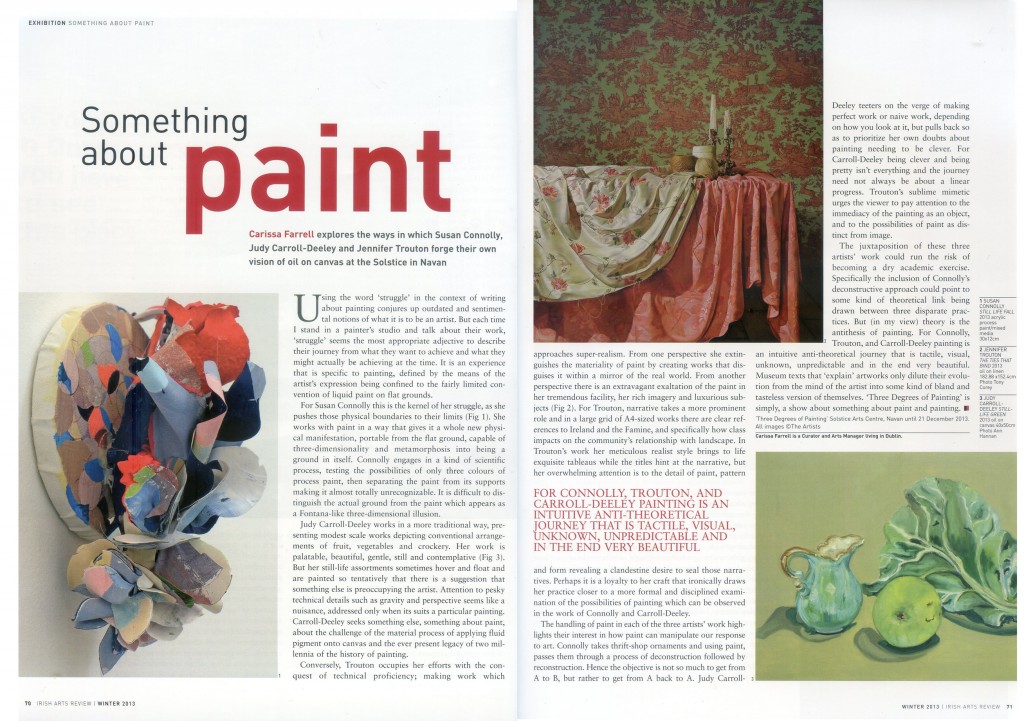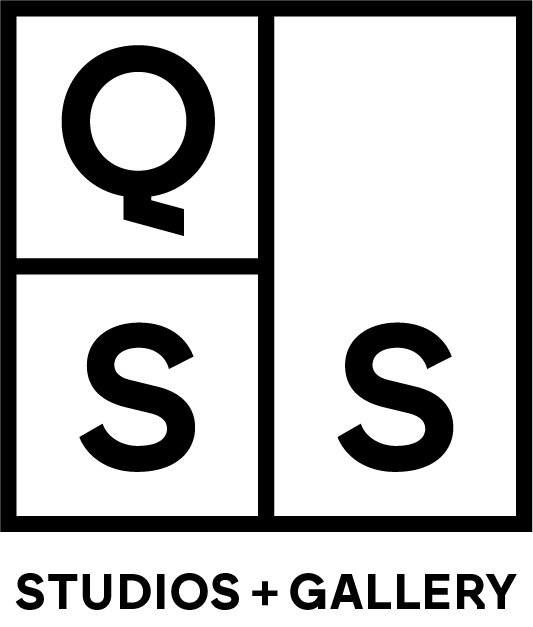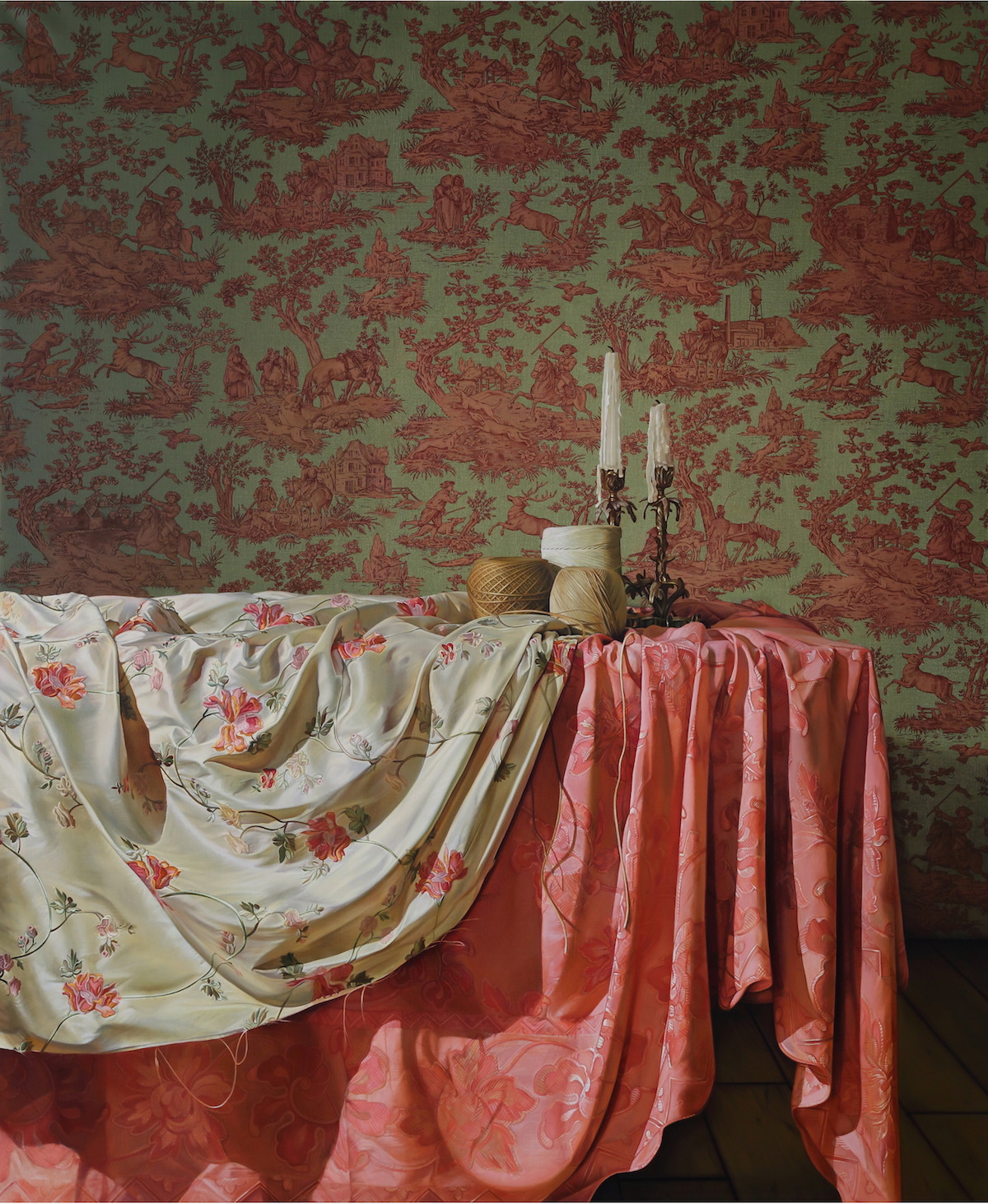Carissa Farrell explores the way in which Susan Connolly, Jennifer Trouton and Judy Carroll Deeley forge their own vision of oil on canvas at the Solstice in Navan.
Using the word ‘struggle’ in the context of writing about painting conjures up outdated and sentimental notions of what it is to be an artist. But each time I stand in a painter’s studio and talk about their work, ’struggle’ seems the most appropriate adjective to describe their journey from what they want to achieve and what they might actually be achieving at the time. It is an experience that is specific to painting, defined by the means of the artist’s expression being confined to the fairly limited convention of paint on flat ground.
For Susan Connolly this is the kernel of her struggle. as she pushes those physical boundaries to their limits. She works with paint in a way that gives it a whole
new physical manifestation, portable from the flat ground, capable of three dimensionality and metamorphosis into being a ground in itself. Connolly engages in
a kind of scientific process, testing the possibilities of only three colours of process paint, then separating the paint from its supports making it almost totally
unrecognizable. It is difficult to distinguish the actual ground from the paint, which appears as a Fontana-like three-dimensional illusion.
Judy Carroll Deely works in a more traditional way, presenting modest scale works depicting conventional arrangements of fruit, vegetables and crockery. Her
work is palatable, beautiful, gentle, still and contemplative. But her still life assortments sometimes hover and float and are painted so tentatively that there is a
suggestion that something else is preoccupying the artist. Attention to pesky technical details such as gravity and perspective seems like a nuisance, addressed only when it suits a particular painting. Carroll Deely seeks something else, something about paint about the challenge of the material process of applying fluid pigment onto canvas and the ever-present legacy of two millennia of the history of painting.
Conversely, Trouton occupies her efforts with the conquest of technical proficiency, making work, which approaches super-realism. From one perspective she
extinguishes the materiality of paint creating works that disguises it within a mirror of the real world. From another perspective there is an extravagant exaltation of the paint in her tremendous facility, her rich imagery and luxurious subjects. For Trouton, narrative takes a more prominent role and in a large grid of A4-sized works there are clear references to Ireland and the famine, and specifically how class impacts on the community’s relationship with landscape. In Trouton’s work her meticulous realist style brings to life exquisite tableaus, which the titles hint at the narrative, but her overwhelming attention is to the detail of paint, pattern and form revealing a clandestine desire to seal those narratives. Perhaps it is a loyalty to her craft that ironically draws her practice closer to a more formal and disciplined examination of the possibilities of painting, which can be observed in the work of Connolly and Carroll Deely.
The handling of paint in each of the three artist’s work highlights their interest in how paint can manipulate our response to art. Connolly takes thrift shop ornaments and using paint, passes them through a process of deconstruction followed by reconstruction. Hence the objective is not so much to get from A to B but rather to get from A back to A. Judy Carroll Deeley teeters on the verge of making perfect work or naïve work, depending on how you look at it, but pulls back so as to prioritize her own doubts about painting needing to be clever, For Carroll-Deeley being clever and being pretty isn’t everything and the journey need not always be about a linear process. Trouton’s sublime mimetic urges to the viewer to pay attention to the immediacy of the painting as an object, and to the possibilities of paint as distinct from image.
The juxtaposition of these three artist’s work could run the risk of becoming a dry academic exercise. Specifically the inclusion of Connolly’s deconstructive approach could point to some kind of theoretical link being drawn between these disparate practices. But (in my view) theory is the antithesis of painting. For Connolly, Trouton, and Carroll Deeley painting is an intuitive and anti theoretical journey that is tactile, visual, unknown, unpredictable and in the end very beautiful. Museum texts that ‘explain’ artworks only dilute their evolution from the mind of the artist into some kind of bland and tasteless version of themselves. ‘Three Degrees of Painting’ is simply, a show about something about paint and painting.
Irish Arts Review November 2013.
Carissa Farell is a curator and Arts manager living in Dublin.


